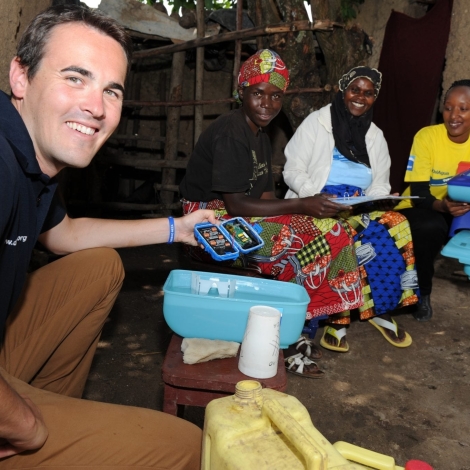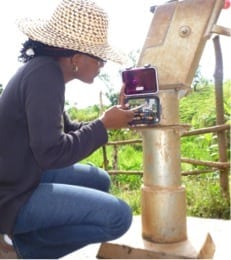Evan Thomas is CEO of SweetSense Inc., COO of DelAgua Health and an assistant professor of mechanical engineering at Portland State University. His new book is Broken Pumps and Promises: Incentivizing Impact in Environmental Health, included among our Professional Development resources. And the SweetSense sensor package is described in our Solutions Library, available for side-by-side comparison to other sensing technologies. This article is reprinted with permission from Mechanical Engineering magazine.
“Good mornings are better when your alarm clock talks to your coffee maker,” a recent ad campaign hints. Your day improves from there when your refrigerator reminds you to buy beer, your thermostat gets the house cozy before you get home, and your car guides you away from traffic jams. It’s a miracle we navigated these first world problems before the advent of the Internet of Things.
IoT, a market anticipated to reach around 25 billion connected devices by 2020, doesn’t have to be just about marginal quality of life improvements for suburban America. It can also help bring critical life-saving services to rural Africa, Asia, and other emerging economies.
While some worry about warm coffee and cold beer, billions of people in developing countries are preoccupied with finding clean drinking water, safe sanitation, and reliable energy from sources other than firewood and kerosene.
For instance, while the proportion of people with access to sanitation has crept up slowly since 2000, access to cellular data networks has exploded. In Africa alone, the GSM Association estimates that 125 million people who lack access to safe drinking water have mobile coverage.
Adding electronic sensors, connected over the cellular networks to Internet databases available globally, can draw attention to and incentivize fixing what we might call the Internet of Broken Things.
“The IoT and connected sensors are driving improvements to human wellbeing in healthcare, water, agriculture, natural resource management, resiliency to climate change and energy,” wrote the United Nations and CISCO Systems in a recently published report, Harnessing the Internet of Things for Global Development.
Adding electronic sensors, connected over cellular networks to global Internet databases, can incentivize fixing what we might call the Internet of Broken Things.
An energetic group of technology entrepreneurs have embraced this premise. M-Kopa in Kenya, for example, leverages IoT to replace charity donations of solar lanterns with a pay-as-you-go subscription service. In Haiti, NexLeaf Analytics has ensured that cold chain integrity is maintained and monitored for critical vaccine deliveries. Oxford University has dramatically improved water pump functionality while creating small water service providers. Nano Ganesh provides remote control of micro irrigation pumps in India. And a number of groups associated with the University of California at Berkeley use cookstove sensors and online analytics to study the behavior of households adopting—or not—improved cookstoves.
Our team at Portland State has conducted numerous public health studies since 2010 with our own IoT platform. In one recent study in Bangladesh, for instance, our instruments demonstrated more than a 50 percent exaggeration of latrine use compared to household surveys. That result may enable funders and development engineers to rethink how they implement sanitation programs.
Or in another example, in 2014 we worked on a project to install about 200 sensors in rural water pumps in Rwanda. The purpose was to identify pumps that were broken in order to dispatch repair teams. Before the sensors were installed some 44 percent of the area’s pumps were broken at any given time, and it took an average of about seven months to get a pump repaired. Adding sensors reduced the repair interval to just 26 days; consequently, only 9 percent of pumps were broken at a time.
We also found that awareness of sensors makes a dramatic impact on household use of water filters or cookstoves in rural Rwanda. On the one hand, that suggests that sensors might be a means to reinforce healthy behaviors. Yet it raises a host of issues for researchers. For instance, to accurately measure behavior, sensors may need to be hidden. And that could create privacy and ethical questions.
Such insights—and opportunities to respond and adjust to challenges in delivering poverty reduction services—are made possible thanks to the Internet of Things. FitBits for clean water filters may soon be coming to a charity near you.



What about leveraging those 125 million with cell phones but not enough sanitation or clean drinking water to do the data backhaul for the sensor nodes?
WIfi, bluetooth, NFC, as well as the cellular radio itself to the sensor and back, even outside of cell coverage, piggybacking the cell phone to hand off the data next time in range. Low data volume relative to user data or phone is small %, so not a big cost, this could be paid for by system beneficiary.